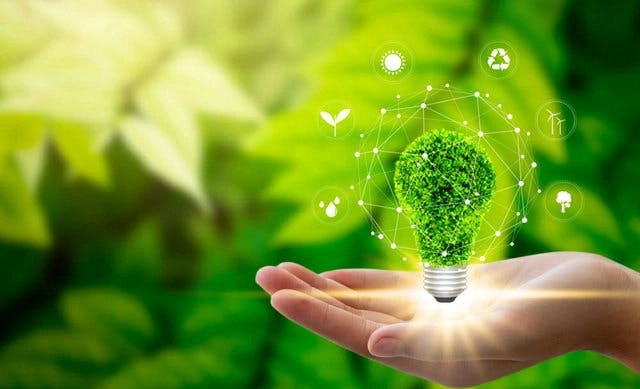Life in plastic is not fantastic.
Why businesses should choose sustainable packaging
Prioritising sustainable packaging is a fairly straightforward route to climate restoration, and apart from being the right thing to do, it is fast becoming the legal thing to do for the industry. According to the recent UK Plastic Packaging Tax, British businesses will be taxed to the tune of £200 per ton on all packaging items they manufacture and/or import into the country unless it contains 30% recycled materials. Governments have realised the importance of sustainable packaging and we look forward to welcoming similar laws across the world. To corporations that think sustainability is a challenge, we propose viewing it as an opportunity and taking these regulatory cues as an impetus for green innovation.
But do consumers really care about sustainable packaging? A recent study conducted by Deloitte indicates that consumers find ‘Producing sustainable packaging and products’ the most important eco-friendly and ethical practice for businesses. The study also found that 75% of all respondents recycled or composted their household waste – a clear indicator of consumers’ growing eco-consciousness. Government policies and consumer demand have created opportune conditions for a prosperous green packaging ecosystem. The world has all the materials and technology needed for this eco-friendly packaging revolution, all we need is to overcome our resistance to change, our inertia of inaction.
Raw Material
The widespread creation, usage, and disposal of inorganic raw materials like plastic, which are created ‘petrochemically’ have caused immense strain on our planet. The best path to regeneration is switching to organic raw materials that don’t disturb the equilibrium of our existence. Thankfully, the Earth has an abundance of options for businesses to choose from. For example, sugarcane residues obtained at the end of the cultivation cycle can be mistaken for waste by the untrained eye. However, they share certain properties of wood fibres and can be used to make a wide variety of packaging products. The journey of a thousand miles begins with a single step, so it’s crucial for the first step to be in the right direction. Material innovation is the need of the hour, so please find some sustainable raw materials here. Choose wisely!

Sourcing
For these raw materials to be truly eco-friendly, they should be obtained ethically and manufactured sustainably. We use multiple packaging products every day, but how many times have we thought about the origin of the materials and their journey to becoming a product? It is important to compensate individuals at the beginning of the supply chain fairly. This is where it’s important to mention certifications like FairTrade for their unparalleled work in ensuring that farmers have safer working conditions and fairer pay. Discarded agricultural fibres used to substitute wood pulp in the packaging industry are sourced from farmers’ cooperatives in developing countries. Agro-waste is widely burnt in these regions as an inexpensive way to clear the land for the next harvest. A truly sustainable business model not only pays farmers sufficiently but also solves several interconnected environmental problems at the source.
Life Cycle Assessment
An LCA is essential to understand the environmental impact of packaging (and other) items throughout their life cycle. It assesses products through 5 stages – raw material extraction, manufacturing, transportation, usage and disposal. In a world consumed by greenwashed messaging, an LCA helps cut through smokescreens of lies and provides results that are based on quantifiable parameters that are universally accepted. An LCA exposes critical areas of improvement, for engineers and product designers to address. Aside from planetary benefits, LCA’s can also help companies improve their profitability. Agro-fibre packaging has a 28% – 38% lower carbon footprint, compared to conventional (unsustainable) products. Sustainability isn’t a tick boxing exercise, it must be prioritized at every step and companies should show genuine curiosity towards being better for the planet. Data-driven decisions are often the best taken, so we’re doing our bit to point you in the right direction.
End-Of-Life
We are much more concerned about the products we buy/receive and less so about the package they arrive in. For the companies selling these products, the packaging is important mainly for transportation and advertising, which is natural. But as far as nature is concerned, disposal is equally (actually it’s a lot more) important. Sustainable packaging is compliant with the circular economy and can be returned to nature safely after its usage, unlike plastic. 160,000 plastic bags are used every second, globally. As we all know, these bags have no earth-friendly disposal streams and go on to create havoc on our environment for centuries! Made using organic materials, the right kind of packaging can be recycled, composted, and more. The utility of the package may end, but life never ends in the circular economy. Hopefully, the same applies to our planet.

Quality
Sustainability shouldn’t mean cutting back on quality and performance. Packaging that is truly sustainable must be great for the environment, of course. At the same time, it should also maintain, if not elevate existing quality parameters. If electric cars didn’t provide a similar build quality, acceleration, driving experience, and more, to petrol and diesel cars, then they wouldn’t have enjoyed such a high adoption rate. One of the most important reasons for the success of alternative fibres in recent times is that the resulting products haven’t fallen short when it comes to performance. A box or food wrapper made using agro-fibres look, feel and perform just the same as their unsustainable counterparts. So, one shouldn’t make purchase decisions based on just the parameters that we discussed before ‘quality’, because quality is a subset of sustainability










